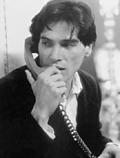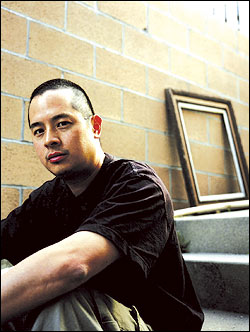The reissues industry seems to run on bifurcated fumes. In order to keep hipsters, hard-core collectors, and media types coming back for more, labels must uncover ever more enticing morsels from the vaults—”the best” of as-yet-unheralded bands or outtakes from the iconic— or repackage already-available stuff cunningly enough to both teach veterans something extra and hook in the newbies who missed this stuff when it last appeared (usually about five years ago). With nonspecialty labels, the product also has to attract the casual shopper’s eye without appearing ready for the cutout bins: This is why the Eagles’ catalog keeps getting shifted into not-all-that-different shapes, like hourglass sand; it’s also why certain long-dormant vogues get resuscitated (see the so-called “post-punk revival”). And just as major labels are beginning to recycle their previous deluxe reissues—witness the umpteenth Johnny Cash box and a three-disc Donovan set (apparently updating 1992’s two-disc Donovan set), both slated for September—they’re beginning to rework packaging concepts as well.
Hence, Hip-O/Universal’s new slew of two-CD sets under the “Gold” rubric. Some of these are too long (Aerosmith, who could easily fill a full-career double, excises everything before 1985), others are simply retitled earlier works (Motown Gold once had different cover art and the title Motown: The Classic Years). But their Parliament set is more thorough (and chronologically ordered) than 1993’s Tear the Roof Off anthology. And the hoariest idea of them all is breathed through with new life.
Classic Rock Gold is precisely what it says it is: from 1968’s “Born to Be Wild,” by Steppenwolf, to Whitesnake’s 1987 “Here I Go Again,” two decades covered by 33 songs. (Of course! This is album rock.) If you want to figure out classic rock’s trajectory, look no further than the distance between those two titles. What once were vices become habits, and listening to Classic Rock Gold is as good a crash course as any in the art of turning rebellion into money. Then again, if Jefferson Airplane ever did anything as shamelessly great as a good half-to-two-thirds of what’s collected here, I’ve never encountered it. I’ve also never encountered a more comprehensively unapologetic compilation than this one—even if you grew up on classic-rock radio in the suburbs, it’s hard to look at this track list and think anything other than, “Yep. That one.”
It doesn’t seem like an accident that the year that overlaps the discs’ divide is 1974. Rock culture’s rebellious streak may stretch long, but it tore pretty hard when the ’60s ended sometime between Altamont, near Christmas 1969, and Nixon’s 1972 re-election. By Watergate, no one was even pretending that rock was going to change the world, which was fine for most people but a little less than invigorating as far as rock itself was concerned. Still, fumes get you a long way: Even if the Doobie Brothers’ “China Grove” or Bachman Turner Overdrive’s “You Ain’t Seen Nothing Yet” seemed a long way off from Dylan or Hendrix at their most “profound,” they still communicated a grandeur less tinny than ’80s rock and less morose than that of the ’90s, exuding a kind of holy purity even on the in- defatigably goofy “Ain’t Seen Nothing Yet.” That even includes the Guess Who’s 1970 “American Woman,” the stupidest rock song ever written by non–white supremacists.
It’s also not a great surprise that Classic Rock Gold ends with Whitesnake’s “Here I Go Again”—a song that amounts to a supercharged power ballad, even if its tempo is a lot quicker than your average “Every Rose Has Its Thorn” and “When the Children Cry.” That’s because the thick, snarling stomp and unself- conscious bad-assedness that “Born to Be Wild” begot has largely strayed out of rock since grunge’s rise. (When the Darkness or Electric Six get on the radio with this kind of thing, it is generally understood that they are doing it with a wink, whether they’re actually winking or not.) The exception to this is the power ballad, a form that only classic rock could have birthed: romantic, dippy, sentimental—and rockin’. Whatever the nationalities of many of the acts here (Canadian, English, German, Danish), it’s the most American musical style imaginable, the sound of having your cake and eating it too. Or, maybe more to the point, dreamin’ of it.









